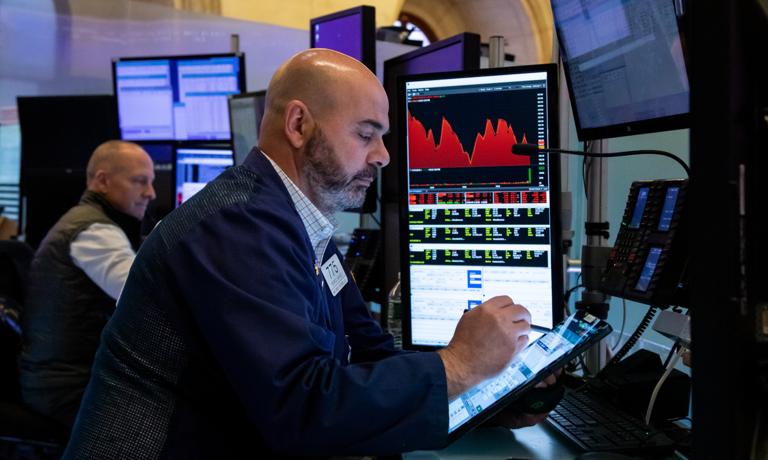The S&P 500 fell 1.45% after falling about 2% the day before. Thus, the main index of the US stock market fell below its 200-day moving average and returned below the downtrend line, which it managed to break through in late January. So, “from a technical point of view,” the situation does not look good from the point of view of the stock market bulls.
Nasdaq fell by 1.76%, stopping at 11,138.89 points. Like the S&P500, The Nasdaq Composite Index also hit its lowest level since January. The Dow Jones index lost 1.08% to 31,881.50 points, the lowest level since November. Throughout the week, the S&P 500 lost 4.6%, the Nasdaq 4.7%, and the DJIA 4.4%.
Similar to the previous day, Friday’s sell-off was driven by problems in the US banking sector. The Federal Deposit Insurance Corporation (FDIC) – the government agency that guarantees bank deposits – has decided to close the Silicon Valley bankAnd whose shares fell 60% the day before. The Bank of California failed to raise the necessary capital. You can read more about it in the article “Silicon Valley Bank Shut Down. It’s the Biggest Bank Failure Since 2008.”
The collapse of SVB is considered the largest failure of a US bank since the financial crisis of 2007-2008. SVB has more than $200 billion in assets and specializes in financing young technology companies. Other smaller banks in the US, whose assets have suffered from the Federal Reserve’s monetary tightening, are likely to encounter similar problems soon. History has taught us that almost every Fed rate hike cycle is accompanied by losses in the financial sector, as the chart below from Bank of America analysts shows.
Monthly data from the US labor market have been overshadowed by the collapse of the Silicon Valley bank. February data showed a very strong increase in employment, higher occupational activity for Americans (evidenced by a rise in the unemployment rate from 3.4% to 3.6%) and wage pressure slightly less than expected. We write more about this in the text entitled Other Strong Data from the US Labor Market.
In this context, a drastic change in expectations regarding the March FOMC decision should be noted. On Tuesday, the futures market was leaning towards the option of the Federal Reserve raising interest rates by 50 basis points next week. The odds of such a scenario occurring were estimated at 80%. But after the failure of the SVB, the possibility of a rate hike of only 25 basis points is of higher value. Contracts estimate the chance of a move at 62%.
It is impossible not to mention here the massive buildup of US debt. Just on Friday, the yield on Uncle Sam’s two-year note fell by more than 30 basis points. After a decrease of 20 basis points. yesterday. In total, we both got a half percentage point reduction! It happened after the yield on two-year US bonds topped 5% on Wednesday and reached the highest level since 2007.
Yields fell sharply at the “long” end of the US futures curve. Tresials’ 10-year yield fell 23 basis points, to 3.69%. A decrease in yields indicates an increase in the market price of the bond. It is also a sign that investors have suddenly rushed to “safe havens”, reducing their appetite for risky assets overnight.

Echo Richards embodies a personality that is a delightful contradiction: a humble musicaholic who never brags about her expansive knowledge of both classic and contemporary tunes. Infuriatingly modest, one would never know from a mere conversation how deeply entrenched she is in the world of music. This passion seamlessly translates into her problem-solving skills, with Echo often drawing inspiration from melodies and rhythms. A voracious reader, she dives deep into literature, using stories to influence her own hardcore writing. Her spirited advocacy for alcohol isn’t about mere indulgence, but about celebrating life’s poignant moments.










